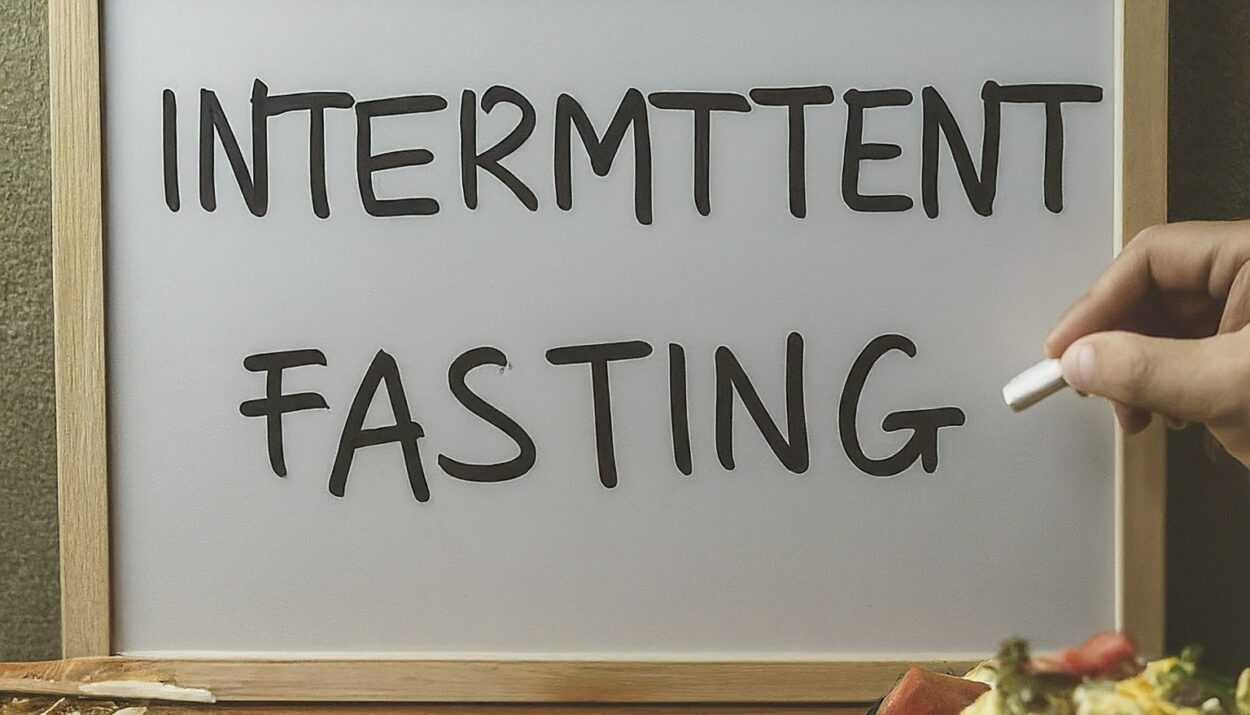Are you looking to energize your health and streamline your eating habits? Intermittent fasting presents a practical and effective approach to achieving your wellness objectives. It’s more than just a fleeting trend; it’s a method that fits effortlessly into your busy life, enhancing your energy levels and mental clarity. Whether you’re already into health and wellness or exploring new techniques, this guide will provide clear insights into intermittent fasting. Discover how adjusting your eating schedule can significantly impact your health and seamlessly align with your daily routine.
What is the Intermittent Fasting Method?
Intermittent fasting is a dietary strategy that alternates between eating and fasting periods. Instead of focusing on specific foods, it centers on timing your meals. Popular methods include the 16/8 approach, where you fast for 16 hours and eat during an 8-hour window, and the 5:2 method, which involves eating normally for five days and significantly reducing calorie intake on two non-consecutive days. This method can help manage metabolism, boost energy, and support weight loss by giving your body extended periods to burn fat. Adopting intermittent fasting can lead to a healthier, more manageable lifestyle.
How to Implement Intermittent Fasting
Intermittent fasting involves alternating between eating and fasting periods. Here’s a streamlined guide to help you start:
1. Select a Fasting Plan
In the 16/8 method fast for 16 hours each day and eat within an 8-hour window. For instance, you could eat from 12 PM to 8 PM and fast from 8 PM to 12 PM the following day. In the 5:2 method eat normally for five days a week and limit calorie intake to 500-600 calories on two non-consecutive days. You can also undertake a 24-hour fast once or twice a week, such as fasting from dinner one day until dinner the next day.
2. Set Your Eating Window
Plan your meals during the chosen eating window, ensuring you consume balanced and nutritious foods. Drink water, herbal teas, or black coffee during fasting periods to maintain hydration.
3. Start Gradually
Begin with a shorter fasting period and progressively extend it. For example, start with a 12-hour fast and increase it to 16 hours as you become more comfortable. Adjust the fasting duration based on how your body responds.
4. Focus on Nutritional Balance
Prioritize whole foods, including vegetables, fruits, lean proteins, and whole grains. Limit processed foods and sugars. Prepare your meals ahead of time to ensure you have healthy options during your eating periods.

5. Evaluate and Adjust
Keep a record of your fasting schedule, meals, and how you feel to make informed adjustments. You can also consult with a healthcare provider, especially if you have any medical conditions, to ensure intermittent fasting is suitable for you.
By following these steps, you can effectively implement intermittent fasting and potentially enjoy its various health benefits.
Foods to Include During Intermittent Fasting
When following intermittent fasting (IF), selecting the right foods during your eating windows is essential for maintaining energy levels and overall health. Here’s a guide to optimal food choices:
1. Vegetables

- Leafy Greens: Spinach, kale, and Swiss chard are low in calories yet rich in essential nutrients like vitamins A, C, and K, and minerals such as iron and calcium.
- Cruciferous Vegetables: Broccoli, cauliflower, and Brussels sprouts provide fiber and antioxidants, which aid in digestion and support general health.
2. Lean Proteins
- Poultry: Chicken and turkey are excellent sources of protein, crucial for muscle repair and overall body function.
- Fish: Salmon and other fatty fish are high in protein and omega-3 fatty acids, which are beneficial for heart health and reducing inflammation.
3. Whole Grains
- Quinoa: A versatile grain that offers complete protein and is high in fiber and essential amino acids.
- Brown Rice and Oats: These grains provide sustained energy and fiber, helping to stabilize blood sugar levels and keep you full.
4. Healthy Fats
- Avocados: Rich in monounsaturated fats and fiber, avocados promote heart health and satiety.
- Nuts and Seeds: Almonds, walnuts, chia seeds, and flaxseeds are excellent sources of healthy fats, protein, and important vitamins and minerals.
5. Fruits
- Berries: Options like blueberries, strawberries, and raspberries are low in sugar and high in antioxidants and fiber.
- Apples and Pears: These fruits offer a good mix of fiber and vitamins while being relatively low in calories.
6. Hydrating Foods
- Cucumbers and Tomatoes: These vegetables are hydrating and low in calories, making them ideal for adding bulk to meals without excess calories.
- Herbal Teas: Non-caffeinated herbal teas are a hydrating choice that can be enjoyed during fasting periods.
Incorporating these nutrient-rich foods into your meals can help you make the most of intermittent fasting, supporting your health and well-being.

Health Benefits of Intermittent Fasting
Intermittent fasting (IF) provides a range of health benefits that extend beyond weight management. By adopting IF, you can enjoy improvements in several key areas:
1. Weight Loss and Fat Reduction
- Calorie Control: By limiting your eating window, intermittent fasting naturally reduces calorie intake, which can aid in weight loss.
- Fat Utilization: Extended fasting periods encourage the body to utilize stored fat for energy, leading to decreased body fat.
2. Enhanced Metabolic Health
- Improved Insulin Sensitivity: IF can enhance insulin sensitivity, helping to stabilize blood sugar levels and lower the risk of type 2 diabetes.
- Decreased Inflammation: Research suggests that intermittent fasting may help reduce inflammation markers, contributing to overall health improvement.
3. Boosted Cognitive Function
- Brain Health: Fasting stimulates the production of brain-derived neurotrophic factor (BDNF), which supports cognitive function and mental sharpness.
- Focus and Clarity: Many people find that fasting periods improve their concentration and mental clarity.
4. Cellular Repair and Longevity
- Autophagy Process: Fasting triggers autophagy, a cellular cleaning process that removes damaged cells and promotes repair, potentially supporting longer life.
- Longevity Potential: Some studies suggest intermittent fasting might extend lifespan by improving metabolic health and reducing age-related conditions.
5. Improved Heart Health
- Blood Pressure Regulation: IF can contribute to lower blood pressure, benefiting heart health.
- Cholesterol Management: Regular fasting may help reduce LDL cholesterol and triglyceride levels, lowering the risk of cardiovascular issues.
Integrating intermittent fasting into your routine can lead to these significant health benefits, supporting a more balanced and healthier lifestyle.
Drawbacks of Intermittent Fasting
Intermittent fasting (IF) can offer many health benefits, but it also has some potential drawbacks that you should consider before starting. Here are some of the main concerns:
1. Hunger and Mood Changes

Ongoing Hunger: Many people experience persistent hunger during fasting periods, which can be uncomfortable and challenging to manage.
Irritability: Low blood sugar levels during fasting can lead to irritability and mood swings, affecting your overall well-being.
2. Risk of Nutritional Imbalance
- Restricted Eating Times: Limited eating windows may make it difficult to get a balanced intake of essential nutrients, increasing the risk of deficiencies.
- Insufficient Caloric Intake: Fitting all necessary calories and nutrients into a restricted eating period can be challenging, potentially leading to inadequate nutrition.
3. Social and Lifestyle Impact
- Social Inconvenience: Intermittent fasting can interfere with social meals and events, making it harder to engage in gatherings that revolve around food.
- Lifestyle Disruptions: Adhering to a specific fasting and eating schedule can be inconvenient for those with busy or irregular routines.
4. Risk of Overeating
- Compensatory Eating: There’s a tendency to overeat during the eating window to compensate for fasting periods, which can diminish the benefits of IF.
- Poor Food Choices: The restricted eating times might lead some to choose unhealthy foods when they do eat, counteracting the health advantages of fasting.
5. Not Ideal for Everyone
- Medical Concerns: Individuals with certain medical conditions, such as diabetes or those undergoing specific treatments, should approach intermittent fasting cautiously and consult a healthcare provider.
- Pregnancy and Lactation: Pregnant or breastfeeding women need to be particularly careful, as their nutritional needs are higher during these times.
Before starting intermittent fasting, it’s essential to weigh these potential drawbacks and seek medical advice to ensure it fits your health needs and lifestyle.
Conclusion
Intermittent fasting offers significant health benefits when paired with a balanced diet. By focusing on nutritious foods like lean proteins, whole grains, and hydrating vegetables during your eating periods, you can optimize the advantages of intermittent fasting and support your overall health. Selecting the right foods is crucial for maximizing the effectiveness of this fasting approach and maintaining a well-rounded, healthy lifestyle.
Learn more about Diet here
Related posts










